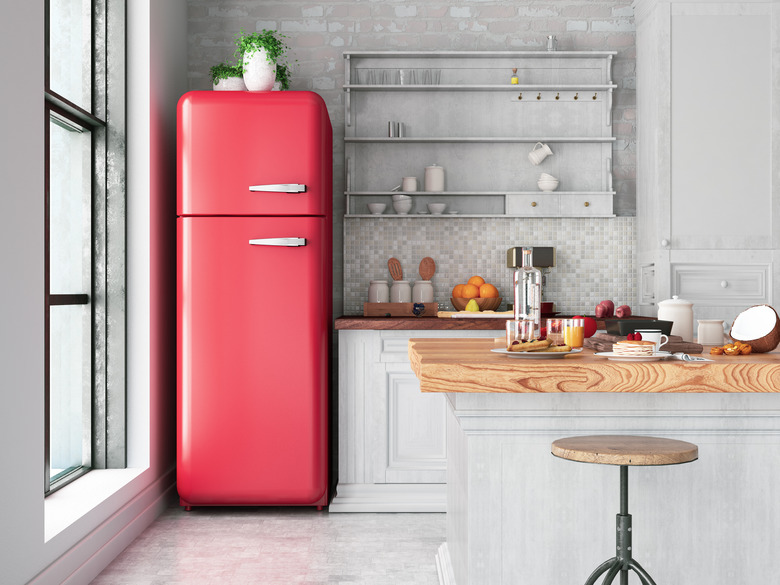How Many Watts Of Electricity Do Appliances Pull?
Opening your electric bill can be a breathtaking moment, especially during a long, hot summer or freezing winter. You may wonder how many watts of electricity the appliances pull while in use. When comparing your power usage, consider that your old appliances may be power hogs, while installing new, energy-efficient units can help save energy and your budget.
Tip
The amount of energy used by appliances, measured in watts, varies widely depending on the age and type of appliance. An older-model refrigerator may pull 150 kWh, while an electric water heater may pull 380 to 500 kWh per month.
Defining Watts of Energy
Watts are the standard unit of measure for electrical power. Generally, small-appliance power usage is measured in watts, and larger appliances are measured in kilowatts. A kilowatt (kW) is 1,000 watts, a megawatt (MW) is 1,000 kilowatts or 1,000,000 watts, and a gigawatt (GW) is 1,000 megawatts or 1 billion watts. The energy that your appliance pulls in one hour of steady use is called a watthour (WH).
Calculate Appliance Watt Usage
When calculating how much energy an appliance uses, check the owner's manual. If the manual is not available, check the label on the side, back, or inside of the door of the appliance to locate the wattage. Then add the number of hours per day that you use the unit. Multiply the wattage by the hours and then divide by 1,000 to find the kilowatts per watthours (kWh) to determine the amount of power used daily.
To take this a step further, multiply the kWh by 30 to find the monthly usage of that appliance. If you need to know exactly how much it costs to run that appliance per month, continue by multiplying the total of the kWh per month and the rate your utility provider charges per kWh. This calculation will provide the monthly energy cost for that appliance and help you determine if replacing the unit with a new energy-efficient model is a budget-friendly decision.
Choose Energy-Efficient Appliances
Since 1980, the United States has required that all appliances have an energy guide label that provides the average energy consumption of that unit. It also provides an estimate of the annual cost to operate the appliance, which may vary depending on the local utility's charges per kWh. Energy-Star-certified appliances are energy-efficient models that meet the U.S. Environmental Protection Agency's strict specifications.
Keeping your older appliances clean and in good working condition not only saves energy but also extends the life of the unit. Use a long, flexible brush to clean the coils under or behind the refrigerator and the dryer exhaust vent every six months. Clean the dryer filter with every use.
When replacing an appliance, whether it's a television, refrigerator, water heater, air conditioner, or heat pump, consider your needs, the size of the unit, and the kWh pulled before making a final selection. While energy usage varies, a general range of estimated kWh when using appliances includes:
Heating and Cooling
- Space heater (1,500 W): 1.5 kWh
- Electric furnace: 10.5 kWh (with fan)
- Heat pump (with strips and fan): 10 kWh
- Heat pump (1.5 ton without heat strips): 2.93 kWh
- Heat pump (5.0 ton without heat strips): 9.77 kWh
- Window air conditioner (8,000 Btu): 0.73 kWh
- Central air conditioner (3 ton): 3.0 kWh
- Floor/pedestal fan: 0.03 kWh
- Electric water heater: 380–500 kWh (per month)
- Electric range: 1–2.3 kWh (depending on use of oven or burners)
- Refrigerator (15 cu ft frost-free 1996 model): 150 kWh (per month)
- Energy Star refrigerator (14 cu ft): 34.5 kWh (per month)
- Dishwasher: 1–2.17 kWh (each use)
- Washer (warm wash, cold rinse): 2.3 kWh (per load)
- Electric dryer: 2.5–4 kWh (per load)
- Energy Star electric dryer: 1.90 kWh (per load)
- LCD television (40–49-inch screen): 0.012 kWh
- Gaming systems: 37–233 kWh (per year)
- Stereo: 0.05 kWh
- Radio: 0.02 kWh
- Laptop computer: 0.02–0.05 kWh
- Desktop computer: 0.06 kWh
Save Energy With Small Appliances
Another way to save energy in the home is to use small appliances in place of large appliances. An oscillating fan uses far less energy than an air conditioner. A microwave or slow cooker uses less energy than your oven and helps keep your house cooler in summer, which also reduces your air conditioning bill. On the other hand, when winter weather is frightful, roasting a turkey in the oven warms the house and helps reduce your heating bill.
Small Appliances
- Coffee maker (single serve): 0.26 kWh (per cup)
- Coffee maker (with warmer): 0.4 kWh
- Slow cooker: 0.8 kWh
- Microwave: 0.12 kWh (5 minutes)
- Rice cooker: 0.4 kWh
- Toaster: 0.04 kWh (per use)
You can also save energy by connecting small appliances and personal electronics to power strips. Turn off the power strip when the unit is not in use to prevent the small draw of power that the appliance still pulls even when turned off.
